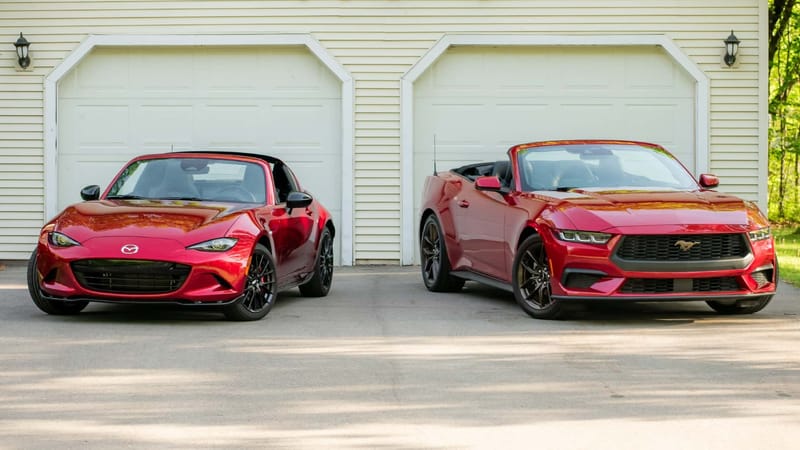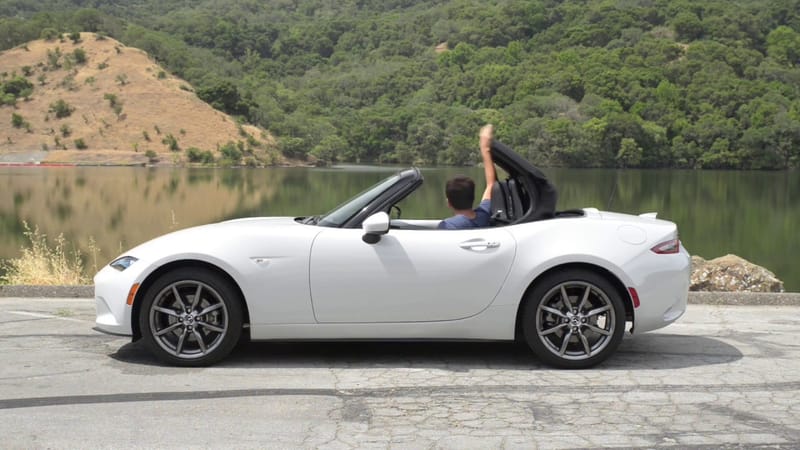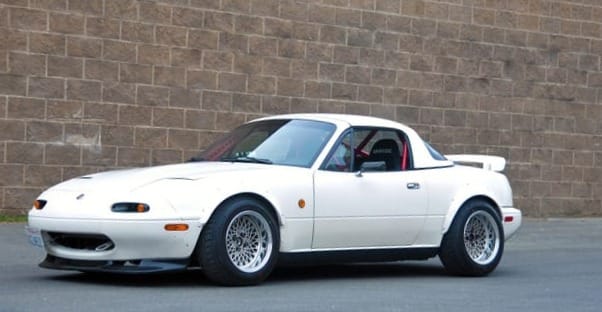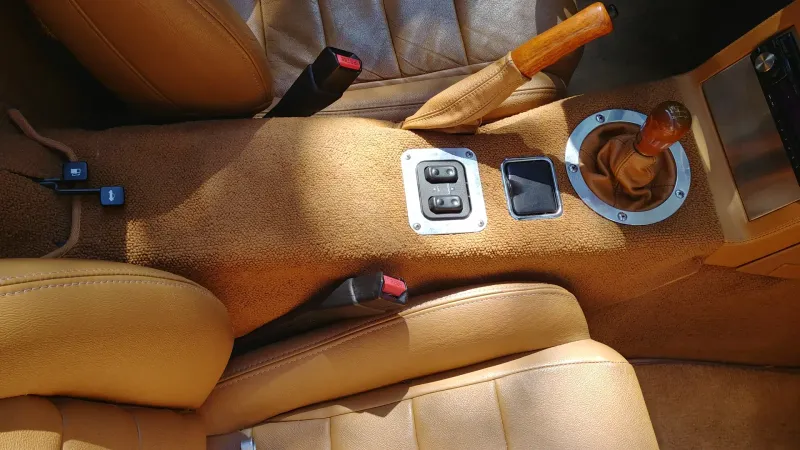Electric Power Steering for NA/NB Miatas
Column-assist adds electric torque directly to the steering column—no pump, no hoses, just a compact, self-contained motor with adjustable assist. Electro-hydraulic uses an electric pump to feed your stock hydraulic rack, keeping that classic steering feel but ditching the belt.

On Miatas, “EPS” usually means one of two things. First is electric column-assist, where an electric motor on the steering column adds torque to your input. You keep your existing rack (manual or properly de-powered), delete the belt-driven pump and hoses, and control assist with a small knob. It’s compact, light, and self-contained.
Second is electro-hydraulic power steering, where an electric pump pushes fluid through your stock hydraulic rack. You still have hoses and fluid, but you lose the belt and get hydraulic steering feel powered by electricity.
Why Go Electric?
Electric assist clears space for engine swaps, ITBs, turbo hardware, and cleaner routing under the hood. It drops weight and eliminates parasitic drag from a belt pump. Column systems in Miatas typically come in around a couple dozen pounds for the full under-dash unit and hardware, and they remove fluid, lines, and coolers. A big perk is adjustability: with a simple controller you can dial up parking-lot assist and dial it back for canyons or track. Reliability also improves because there’s no pump to leak or aerate and fewer heat-soak issues, while electro-hydraulic keeps the familiar hydraulic feel without the belt.

Going Column-Assist EPS
The core idea is to graft a donor EPS column, motor, ECU, and torque sensor, under the dash, adapt it to the Miata column, and pair it with a manual or correctly de-powered rack. The advantages are tidy packaging, no fluid, and easy tuning from the driver’s seat. The tradeoffs are basic fabrication for mounts and couplers, preserving the column’s collapsible safety section, and getting the torque sensor phasing right so the steering feels natural.

How About Electro-Hydraulic Pump?
Here you keep the Miata power-steering rack but replace the belt pump with an electric one. You mount the pump and reservoir, wire a high-amp feed with a relay, and plumb pressure and return lines. The upside is hydraulic feel that’s very close to stock and strong, consistent assist for drifting or long sessions. The downsides are fluid, heat management, and a higher continuous electrical load, plus finding a good location for the pump.

Popular Donor Columns and Controllers (DIY Route)
Common donor columns include the mid-2000s Toyota Prius and contemporary Yaris/Corolla units, which are abundant and well understood. Many builders also use GM Saturn Vue/Chevy Equinox columns thanks to their short length and robustness. Standalone controllers from specialty suppliers provide a small control box and knob; they “spoof” a speed signal to the EPS ECU so you can set assist level from high for parking to low for track.
Installation Flow (Column EPS)
Start with a careful mock-up: remove the OEM column, place the donor unit under the dash, and verify clearance to the pedal box and HVAC. Map U-joint angles to avoid binding. Fabricate or install the brackets, keeping the column’s telescoping feature intact and the wheel centered at your preferred angle. Adapt the donor output to the Miata intermediate shaft and confirm spline matches and fastener engagement. Wire the fused battery feed, clean ground, and keyed ignition; then mount the knob. If you’re de-powering the rack, do the full internal conversion. Finally, center the torque sensor, set a conservative baseline on the knob, and sweep lock-to-lock on jack stands to verify smooth assist and no faults.
EHPS Conversion (Electric Pump + Stock Rack)
Choose a proven electric pump with adequate pressure and flow. Mount it on isolated bushings with service access and airflow in mind. Plumb a high-pressure feed to the rack and a return to the reservoir, adding a small cooler if you track the car. Wire a high-amp fused feed and a relay with keyed trigger, and consider alternator capacity if you also run big fans or other pumps. Fill with the correct fluid, bleed with the front wheels off the ground, and check for noise, heat, and consistent assist as you cycle the wheel.
Electrical Load, Alternators, and Wiring Notes
Column EPS draws power mainly when it’s working; size your main feed and grounds generously and follow the kit’s fuse recommendations. EHPS draws more continuous current, especially at low speeds and high angles, so factor that into alternator and wiring choices if you have other hungry accessories. Controller behavior is straightforward: turning the knob down usually simulates higher vehicle speed and reduces assist; turning it up increases assist for parking.

Tuning the Steering Feel
Begin with minimal assist, just enough to make parking pleasant, and increase until the car returns to center naturally and still communicates mid-corner load. Remember, alignment and tires dominate steering character. Caster, toe, scrub radius, compound, and pressure set the baseline; EPS should complement a well-set chassis, not mask it. For track days, many drivers back the knob down to near-manual levels and turn it up for paddock and street.
Pros and Cons
Column EPS is light, tidy, and adjustable, with no fluid mess, but it demands careful column work and correct sensor phasing. EHPS preserves the traditional hydraulic feel and handles sustained load well, but you still manage fluid and heat, and it adds electrical draw. Bolt-in kits cost more yet compress the project timeline and reduce risk; DIY can be cheaper but requires confidence in fabrication, wiring, and safety details.
Cost Ranges
A budget DIY column using a common donor and a standalone controller usually lands in the few-hundred-dollar range for the column plus roughly a hundred or two for the controller, depending on features. Complete bolt-in Miata kits typically range from around a thousand dollars into the low-to-mid two-thousands depending on whether they include the column, ECU, brackets, and wiring. EHPS costs vary with pump availability and condition, and you’ll add lines, fittings, a reservoir, wiring, and possibly a cooler; plan a similar order of magnitude once everything is included.
Installation Risks and Safety Checklist
Preserve the collapsible section of the steering column, do not weld or fix what’s designed to telescope in a crash. Index the torque sensor correctly; incorrect phasing can cause the motor to “fight” you or oscillate. Keep U-joint angles shallow and in phase, and check for binding lock-to-lock with the car in the air. Follow fuse sizing and cable gauge guidance, and use clean, short ground paths to avoid intermittent assist.
If assist cuts in and out, suspect wiring, grounds, or an undersized or marginal fuse connection. Heavy steering after initial success usually points to the controller being off, a lost ignition feed, or an ECU fault, check the small logic fuse first. Oscillation at low speed often means the torque sensor needs re-indexing or you’re running too much assist; reduce the setting and re-center the sensor. For EHPS, watch fluid level and quality, keep an ear out for pump noise under load, and add a cooler if you’re lapping in hot weather.
Motorsport/Classing and Inspection Notes
Most HPDE and time-trial groups allow EPS so long as you aren’t moving suspension pickup points, but classing varies in autocross and wheel-to-wheel sanctioning, so read your rulebook. Tech inspectors focus on secure column mounts, preserved collapsibility, proper fusing and loom routing, clean wiring, and zero play or binding. If you run EHPS, make sure hoses are protected and away from heat source




